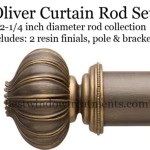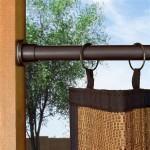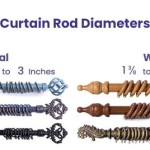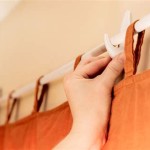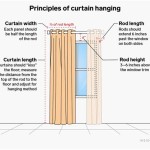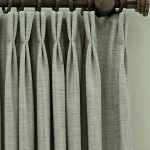How Do You Pleat Curtains
Pinch pleats are one of the most popular curtain pleating styles which are used for traditional and modern interiors. They're created by folding the fabric over on itself twice to form three sections. The middle section is then pinched together, and the outer sections are folded over it and stitched in place. Pinch pleats have a classic, tailored look that works well with any decor. They're also relatively easy to make, making them a good choice for DIYers.
French pleats are similar to pinch pleats, but they're made by folding the fabric over on itself multiple times. This creates a series of small, even folds that give French pleats a more formal, elegant look. French pleats are often used in high-end interiors and are especially well-suited for floor-to-ceiling curtains.
Goblet pleats are made by folding the fabric over on itself and then gathering it at the top. This creates a rounded, cup-shaped pleat that has a soft, feminine look. Goblet pleats are often used in bedrooms and nurseries, but they can also be used in other rooms of the house.
Box pleats are made by folding the fabric over on itself twice to form four sections. The center two sections are then folded together and sewn in place, and the outer sections are folded over it and stitched in place. Box pleats have a clean, geometric look that works well with both modern and traditional interiors.
Choose the right fabric
The type of fabric you choose will affect the look of your pleated curtains. Heavier fabrics, such as velvet or brocade, will create more formal pleats, while lighter fabrics, such as cotton or linen, will create more casual pleats. If you're not sure what type of fabric to use, consult with a professional interior designer.
Measure your windows
Before you can start pleating your curtains, you need to measure your windows. The width of your curtains should be at least twice the width of your window, and the length should be long enough to reach the floor or the desired length. Add a few inches to the width and length for hems and pleats.
Create the pleats
There are a few different ways to create pleats. One way is to use a pleating machine. Pleating machines can be rented from fabric stores or purchased online. If you don't want to use a pleating machine, you can also create pleats by hand. To create pleats by hand, follow these steps:
- Fold the fabric over on itself twice to form three sections. The middle section should be the widest section.
- Pinch the middle section together.
- Fold the outer sections over the middle section and stitch in place.
Repeat these steps to create as many pleats as desired.
Hang the curtains
Once you've created the pleats, you can hang the curtains. Curtains can be hung from a rod or a track. If you're hanging the curtains from a rod, make sure the rod is long enough to extend at least 6 inches beyond the edges of the window. If you're hanging the curtains from a track, make sure the track is long enough to extend at least 3 inches beyond the edges of the window.
To hang the curtains, simply slide the pleats onto the rod or track. Once the curtains are hung, you can adjust the pleats to get the desired look.

Pinch Pleating Curtains The Easy Way Lantern Lane Designs

Diy Pinch Pleat Curtains Fletcher Creek Cottage

Pinch Pleating Curtains The Easy Way Lantern Lane Designs

How To Make Perfect Pinch Pleat Curtains With A Return The Stonybrook House

How To Diy Pinch Pleat Drapes No Sew Method Stefana Silber

Diy Pinch Pleat Curtains Erin Zubot Design

How To Pinch Pleat Curtains Make Them Look More Custom Hello From Liz

How To Diy Pinch Pleat Drapes No Sew Method Stefana Silber

Casual Vs Formal Curtains The Stonybrook House

How To Make Pleated Drapes Pretty Prudent


